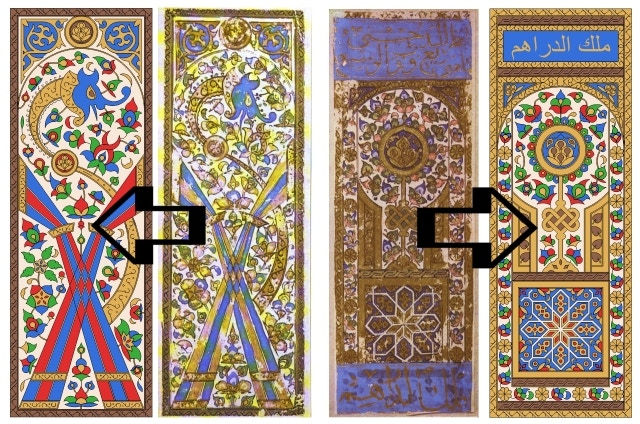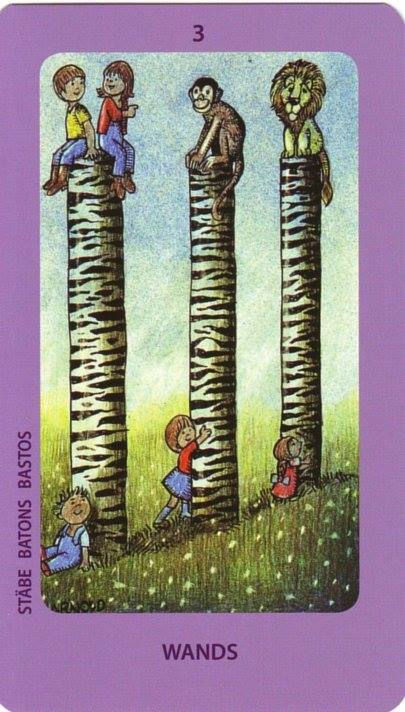[Interview] Ulrich Kaltenborn and his story with the Mamluk deck
- hariolus1995
- Jul 26, 2019
- 5 min read
In September, 2018, Ulrich Kaltenborn, known as Trzes-Art started a Kickstarter campaign to published the Mamluk playing card restored by him. Within one month, on October the 6th, he raised 10,000 euros (the goal was 8,000 euros). With this goal achieved, the final product comes with an A3 sheet that contains small images of the cards in the Mamluk deck, a posher box, a card stand, a booklet with historical information and of course the full deck with 56 cards.

According to Ulrich: the term "Mamluk deck" actually refers to a pattern or type of playing cards that have been found in Egypt during the reign of the Mamluk, but the "Topkapi deck" is the specific deck that belongs to the Mamluk pattern and is consistent of 3 types, and it is a name for the deck that is located in the Topkapi Museum. His production focuses on the original type 1 deck, which mostly comes from the Topkapi deck.

The deck measures 70X190mm (smaller than the original size), and the box measures 80X220X33mm. All the cards are printed on black-core paper, the cards are very flexible and the treatment of the surface feels great! This is a deck that absolutely worths the price and value. I would not say that I am going to use this for reading, but I am still grateful for that someone has brought this important historical playing deck to life! If you are a Tarot or playing card history geek just like me, you have to buy it to enrich your collection. The booklet with historical information is also a good reference.
Many people say that this is the origin of western playing cards, well...I may not agree with that, it indeed has influence on the 4 suits of the modern western playing cards, but I still believe that the Chinese playing cards are the true origin. (Maybe this one comes from my pride hahahaha) Here is my YouTube video of the deck review.
It is my great honor to have the chance to interview Ulrich and I am really grateful for him being so generous and taking his time to answer all the questions. Without further ado, there is the interview!
Interview
First please tell us about yourself
I am an economist by training, living in Berlin, Germany. Playing cards have been a hobby of mine for a long time, starting with magical trick cards when I was still at school.
What is your story with tarot or playing cards? How did you encounter them?
I first came across the RWS (Raider Waite Smith) tarot back in the 1980s. I was instantly drawn into Pamela Coleman's images. They appealed to my subconscious in such an intense way that they would elict whatever story there was, waiting to be told.
Are you a cartomancer? Do you read Lenormand or other playing cards?
I hardly ever read cards. And if I do, then only tarot cards with thought evoking images. I don't believe in anything supernatural. So the one thing that tarot images do to me is to open my mind in some ways.
What is your favorite deck and card? (Except for the one you made)
That's really hard to tell. There are just so many utterly beautiful and brilliant decks in the world. But if it comes to reading there is still no match for the original RWS tarot in my opinion. One of my favorite tarot cards from any deck ever is the three of wands from the Jolanda tarot, because ne of the main meaning of that card in the RWS is "foresight". It's a brilliant take on this meaning. And it shows the happy mindset of childhood: how easy the kids seem to have climbed their safe post, how the lion next to them can't do them any harm. These kids are free and easy and in one with the world.

Why did you choose to restore the Mamluk deck? What is it that so special?
I developed a special interest in historical decks and playing card history a while ago. There is a direct line from the Chinese origin of playing cards via the Mamluk pattern to all European playing cards, including tarot. So I was rather keen on getting my hands on a copy of the Jan Bauwens reproduction of the Topkapi deck, dating to the 1970s. It is a mixture of photographic reproductions and hand-drawn new images of missing cards. When I finally had my copy I was sort of disappointed. Most of the original cards are rather worn or damaged, the colors have faded, and there are those famous blue patches on the court cards that in my book ruin the original design of the cards. I wished for a neat and tidy reproduction that would more clearly show the design principles of the Mamluk pattern. Since there was no such thing (unlike with most early Italien decks, and Marseille) I started doing my own one.
How was the process of prepare and restore the deck? How long did it take, From the research to the actual work?
I started my work on that in late 2013 by drawing outlines of those cards where images of the original cards were available. Parallel to that I did some research, read the rather few articles available, and finally developed my own theory on the original design of the deck. I did all this as a hobby, besides my job, my family and friends, and other occupations. So the whole thing took almost five years.
What was the most difficult part during the process?
It may sound funny, but the flower patterns between the actual designs turned out to be most difficult for me. There is far less of a system with them. And by tidying up the design of the suit symbols and other ornaments the amount of available space between them has changed, so I could not exactly reproduce what was on the cards. I ended up designing some 100 flower outlines, repeatedly printed them on transparent foil and manually moved them around on test prints of the cards until it looked ok.
Did you get any external help?
There was a lot of fruitful discussion on the Aeclectic Tarot Forum that encouraged me and provided many good advices. The patience of my family with my odd hoppy also was a big help. And I would like to specially thank Ramon Torrente Casado and Agnes Kappler who checked the final design and spotted quite a number of small and even not so small mistakes.
You have raised 10000 euros on Kickstarter, did you expect this number or it was also a surprise?
I had hoped to raise enough interest in my project, since the Topkapi deck is an important part of playing card history. I am very grateful that 133 backers shared that view and decided to support me. There was also the rather generous donation of an institution called "Radius Foundation". Desmond Meraz, who had followed my project for quite a while has proposed my project to them. And last not least there is Ramon Torrente again, who threw in another 90 Euros minutes before the end of the campaign, only to make the total sum of pledges exactly one Tuman. "Tuman" is the original name for the suit of multitudes, and stands for the amount of 10000. This kind of magic really came as a surprise.
Are you going to restore more historical deck?
Not in the near future, I suppose. But there is the Moorish deck for example, the only other deck following the Mamluk pattern with enough cards left to at least make a guess about the possible original design. Although there are several good reproductions available, I feel tempted to add my own take on the matter some time. Other decks might follow, but I have no concrete plans so far.
What would you like to say to our dear readers?
Many thanks for your interest in my little project, and for your support.
References:
Trzes-art Kickstarter campaign: https://www.kickstarter.com/projects/119783014/trzes-mamluk-deck?lang=esUlrich
Kaltenborn's website: http://mamluk.spiorad.net/history.htmAbout
historical information: http://cards.old.no/1500-mamluk/https://www.wopc.co.uk/egypt/mamluk







Comments